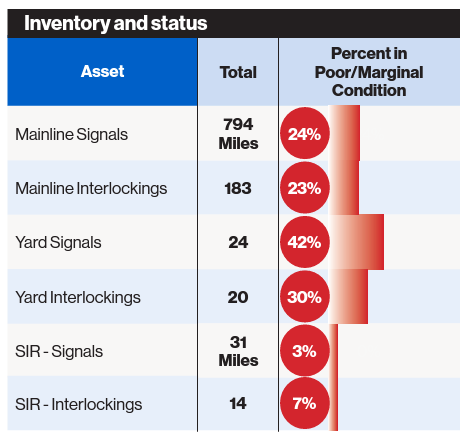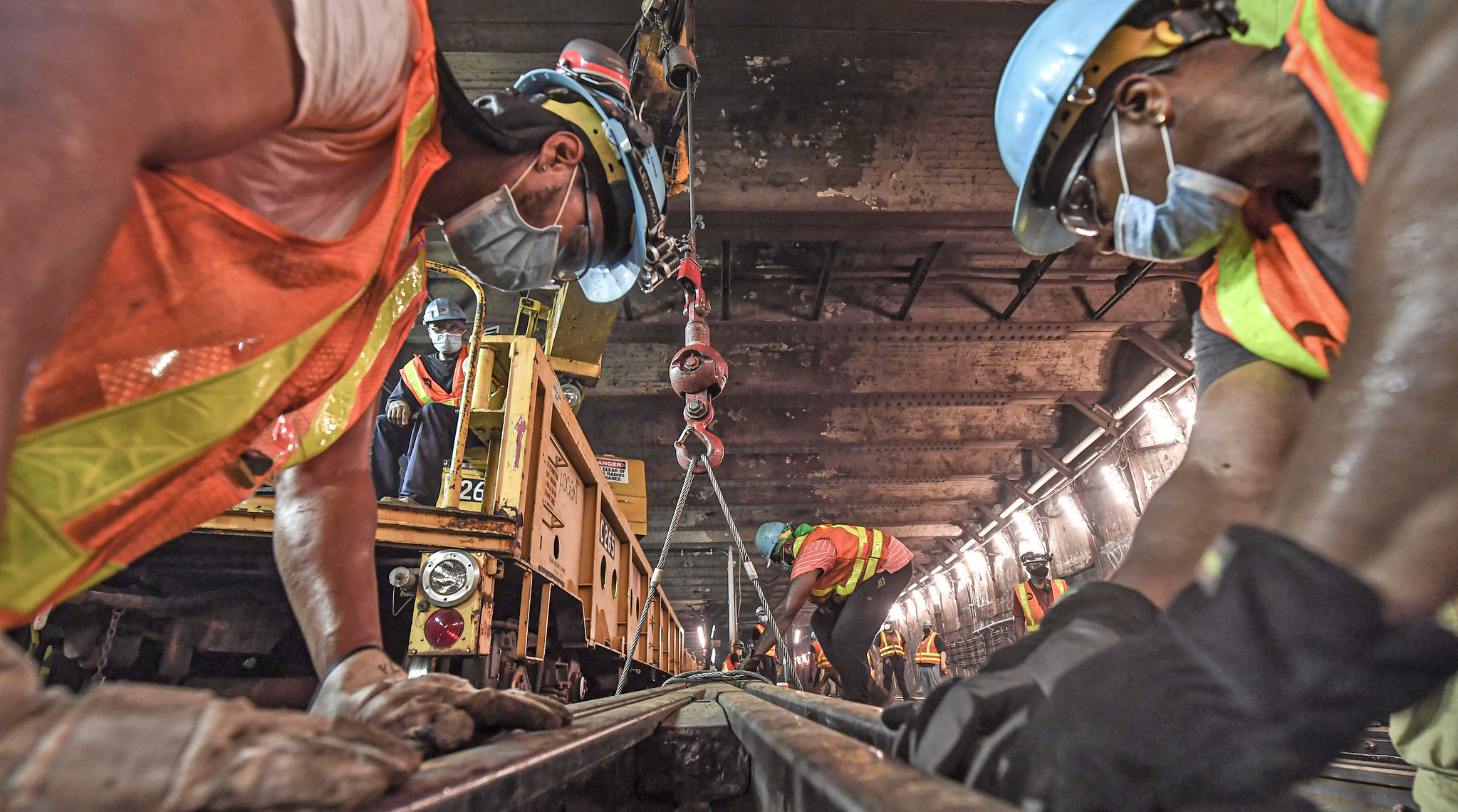Someone call Kris Kross, because the MTA is doing things backwards.
The MTA released a long-awaited capital planing document on Wednesday morning meant to put a price tag on how much it will cost to repair, refresh and expand the system. But outside observers were baffled as to why the MTA neglected to say how much the repair and refresh part would cost.
"We do know how much the expansion projects will cost, we know how much the 'like to do stuff' will cost but not the 'need to do stuff,'" said Citizens Budget Commission President Andrew Rein. "That seems a little reversed. Shouldn't you know what the 'need to do' costs first?"
The 20-Year Needs Assessment is a study in which the MTA takes stock of its entire inventory, in part to prepare for its new five-year capital plan. The document traditionally includes a big picture look at how much it should cost to maintain and modernize things like subway cars and signals, bus depots, fiber optic cables, stations and bridges; and the condition of said equipment. Since 80 percent of a given capital plan is devoted to ensuring the whole MTA universe is up to a state of good repair, previous needs assessments have put a price on how much it would estimated to cost to do that over a 20-year period (see chart below).

But this latest version didn't include dollar figures for the upkeep of the assets, something agency leadership said was a deliberate choice and not an accidental oversight.

"This is an effort to look at the system's true needs over the next 20 years without trying to constrain it as previous 20-year needs assessments have done," said MTA President of Construction and Development Jamie Torres-Springer. "They've started with a budget number and basically fit the needs into that number. We did not do that. We started with an unconstrained number about what the system's true needs are."
But outside observers say there's a difference between trying to fit into a budget box and not being up front about your needs.
"You shouldn't have a constrained needs assessment [but that's] not the same as saying you shouldn't ask me what it costs. Because what if it's $300 billion? They should have an unconstrained needs assessment that includes the cost. To actually put dollar figure on something doesn't mean that you have the money to afford it," said Rein.
Rein praised the agency for going deeper in its presentation of asset inventory and condition than it had before, which the CBC advised the MTA to do in a report that came out before the needs assessment did. Unlike previous years, the agency broke out the components of larger assets it owns such as stations and bus depots into more granular pieces.
"The MTA did a much better job assessing its assets, and laid bare the systems' precarious state of repair and rightly stressed that a precondition to expansion is to preserve the system we now have," he said.
This version of the needs assessment is also a much more compelling and colorful document, and can better communicate the agency's needs to the public better than the previous publications that offered up somewhat dry narratives about the system's condition.
But even providing a more comprehensible look at the condition of the MTA's assets only got half the job done without noting how much it would cost to replace or rebuild them. And after the MTA blew off a needs assessment in advance of the 2020-2024 capital plan and advocates had to mount a full scale campaign to get the state legislature to pass a law requiring regular 20 year needs assessments, the half-finished job left those same advocates frustrated with the resulting document.
"In an environment of limited resources, it is essential that we prioritize capital projects based on objective measures of need, not politics, to repair the subways, buses and commuter railroads and ensure that they continue to best serve New Yorkers in this era of climate change," said Reinvent Albany Senior Researcher Rachael Fauss, faulting the MTA for not including "dollar figures showing exactly how much money will be needed to fix the subways, buses, and commuter railroads."
According to Torres-Springer, previous efforts to price out the system needs over two decades weren't scientific enough.
"It's not realistic to estimate what the capital cost is of investing in a system like this over 20 years. There's no way that we would be coming up with a realistic number. What's much more realistic is coming up with a five year plan, and that's what we're going to do now that we have the needs assessment," he said.
The MTA executive also sought to redefine the report as one that only explored what the transit system needed, and separate that from what could be planned for.
"This is needs assessment, this shows us the need. That's different than plan-making. Plan-making is beginning to take these needs and grouping them together into projects based on a variety of factors," he said.
But without knowing the full cost, observers point out it will be hard to know much of the needs are really being taken care of.
"How much of the need are we addressing?" asked CBC Vice-President for Research Ana Champeny. "We're never going to know because they didn't tell us what the total number was."
And because dollar figures weren't included, it will be difficult to have the right conversation about the 2025-2029 capital plan, on which the MTA Board is supposed to vote in just 15 months.
"I think fundamentally, that omission denies policymakers and the public the information to start a conversation that we desperately need to have, which is how to prioritize our dollars for the most important assets that we have to keep our economy and quality of lives going. We need to start having those conversations. And the needs assessment should kick that off, and to do that you need the dollars," said Rein.






